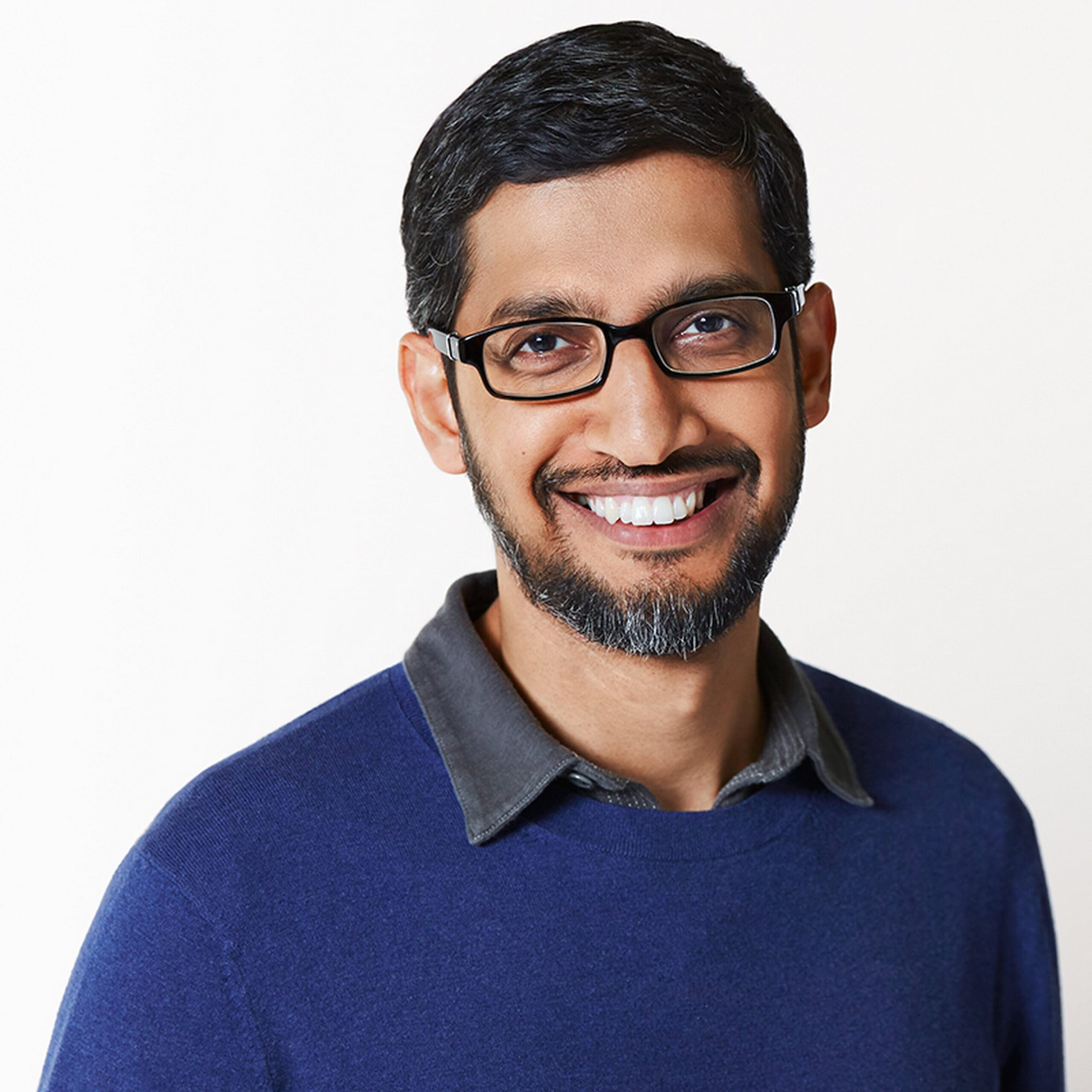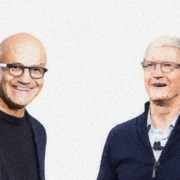
We’re sharpening our focus on a clear set of product and business priorities..
This opening remark during Alphabet’s recent earnings disclosure event aptly frames the company’s aspirations. Google and Alphabet CEO, Sundar Pichai, could not have said it better. In many ways, the tech giant finds itself at a crossroads. A misstep could cost them time and momentum – money is not an object. The road ahead is uncertain, and standing still is not an option.
But sharpening focus is easier said than done. It requires clarity around the big questions: what we stand for, and our overarching value proposition. For a company going through what looks and feels like an identity crisis, this is a pivotal question. So much else depends on it.
This article reflects on tension points the Google group will need to master in finding and leveraging its core strengths, and putting forward a compelling proposition. While it may not be feasible to establish a universally fixed posture – surviving in tech does require incredible agility – it’s worth optimising key product decisions on these dimensions.
Focused versus Curious
A starting point for this conversation is the number of products Google currently supports. At the time of writing this article, there are 101 business and consumer solutions listed on the product page. That’s a large number. More notably, these products do not fall into a single vision. We cannot glimpse an answer to the question of what Google is about by looking at its products.
As a Google consumer, I use about 10 of these products – mostly Search, Gmail and YouTube. Despite my best efforts, I cannot see myself using many of their other products. For example, did you know that Google supports a video editing software branded Google Web Designer? Did you also know that you could buy domains from Google Domains? The product portfolio delivers a broad range of solutions to completely unrelated problems. It gets more interesting.
Take a closer look, and you quickly notice considerable product overlap. Google TV, for example, overlaps with YouTube premium and Chromecast. Similarly, the Messages product overlaps with Hangouts and Meets. While these products are arguably different in some ways, they are similar in their essential purpose. This means Google is effectively pitting their products (and product managers) against each other.
It’s OK to explore different sources of growth. However, curiosity is a two-sided coin. It could either lead to clarity on one hand or (less remarkably) chaos on the other. Sometimes, the difference is not so apparent until we step back and realise there is no big picture to see.
On a more positive note, Google does appear to be taking some corrective measures by shelving overlapping products. Take Google Surveys and Surveys 360 for example. The idea with these products was to help gather the insights needed to make smarter, faster business decisions – in a fraction of the time. The problem was that Google Forms is a great tool that is wildly popular, capable, and free. Surveys and Surveys 360 are being sunset.
There is a product deep clean underway. And that’s welcome. Let’s consider a more structural tension. One that relates to how Google positions itself in the market.
Integrated versus Insulated
Google has (for the most part) welcomed the idea of working with strategic partners to deliver their products. They’ve built the software and left the hardware to other players. Contrast this to fellow tech giant Apple, whose ecosystem of products and services is often referred to as a ‘walled garden.’
One product that showcases Google’s openness is the Chromebook. It’s a laptop device that runs on Google’s proprietary Operating System, Chrome OS. Laptop manufacturers get to create their versions of Chromebook, catering to different niches from the price sensitive, to the performance hungry. While Chromebook and Chrome OS are a more recent iteration of Google’s open model, they’re not the only ones. Google’s Android Operating System is a more established example of this model in the smartphone market. This type of hardware partnership fosters innovation in the space and enhances the buying options for consumers.
The model is not without its shortcomings. For one, this level of interdependence makes it hard for Google to control the customer experience fully. Hardware manufacturers profoundly influence how we experience Android Phones and Chromebooks. Consequently, Google cannot have a holistic vision of the customer experience.
In fairness, Google has never been a hardware company. But without deep hardware integration, it is hard to achieve the level of fit and finish in the customer experience that comes so naturally to Apple, their main competition. Indeed Apple is widely regarded as the archetype of customer-centric product design.
Google has since entered the hardware space with remarkable results. Their Pixel Phone quickly set the bar for what a smartphone could be after it launched in 2016. It is widely regarded as the smartest smartphone in the room. The Pixel takes what Google does best – building powerful utilities – and amplifies it in a smartphone. The Pixel Phone is known for its groundbreaking innovations in image processing, call screening, caller assistance, and voice-to-text functionality among other features.
Google’s integration into hardware is not confined to smartphones. The Pixelbook, Google’s very own Chromebook, has made similar waves in the Chromebook space. We are seeing Google unlock immense potential by stepping into hardware. If I had to call it, Google’s strength is intelligent (not necessarily beautiful) design.
Beyond product clarity and building hardware capabilities, there is yet another tension for the group to master.
Consumption versus Community
The final question relates to the balance between consumption and community. I see this playing out most prominently on the YouTube front. Two strategic priorities avail: Make it easy to consume videos, or make it easy to connect with content creators. The first priority may yield improvements in search result relevance, UI, and accessibility. And the latter could result in features to help YouTubers leverage content to connect with their followers at a deeper level.
Nothing prevents YouTube from optimising for both. But there is a line between what is possible and what is ideal. And finding the balance between consumption and community requires brand clarity. It requires knowing why people gravitate to a brand. The main competition here is not Meta or Twitter. It is Netflix.
YouTube recently informed its channel managers of an interesting new feature launch. According to the communication, handles will ‘make it easier for members of the community to find and connect with each other.’ Viewers who want to leave a comment can now mention the channel using its handle. It strikes me as a great idea. It does, however, feel like a precursor to something larger. YouTube may be thinking strategically about community and connection.
To be sure, YouTube is a place for consuming video content primarily. In some cases, viewers may want to connect with the content creator. Does this warrant a shift in focus? I’m concerned that if YouTube evolves to cater for connection and community, it may deter those who just want to consume content. That is most people.
As it is, social media is a mature industry. Imperfect but mature. The idea that people are willing and eager to change how they connect online is presumptuous at best. It would take a large buzz to affect consumer patterns at any scale. Speaking of buzz, the group’s prior forays into social media, including Google+ and (lest we forget) Google Buzz, all failed to live up to consumer hype. Making connection and community a strategic focus yet again would be a hard sell to consumers.
The Google Way
This article unpacks all my concerns for a brand that has grown on me over the years. As someone well within Google’s fold – I’m currently writing this on a Google Doc – I think the Google proposition today is the best we’ve seen yet. I’m excited by the possibility. Google’s office suite – Google Workspace – is hands-down the best in the cloud. Google’s Search and YouTube are essentially unrivalled in their respective categories.
But I’m even more excited by the Google promise. Their stated mission is to organise the world’s information and make it universally accessible and useful. I’ll admit, it doesn’t have a gracious ring to it. But for what it lacks in elegance, it makes up in functionality. That to me is the true essence of Google’s brand. It empowers us with the agency needed to access, manage and leverage information.
And that’s a promise which Google is in pole position to deliver.
Image source: Google.



